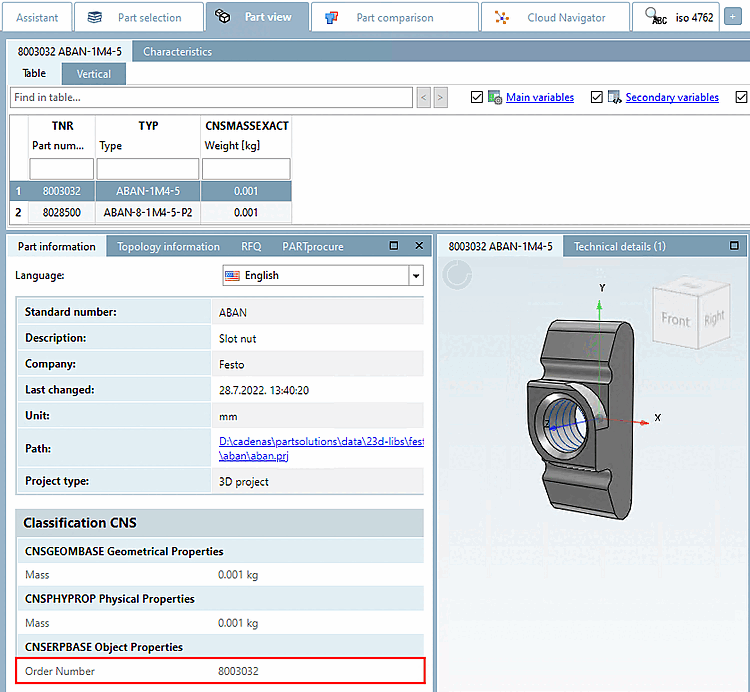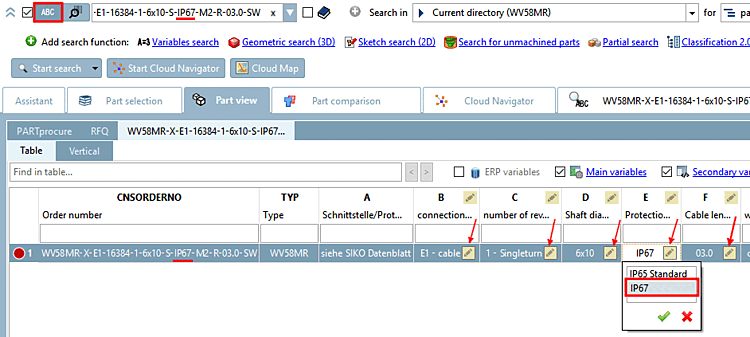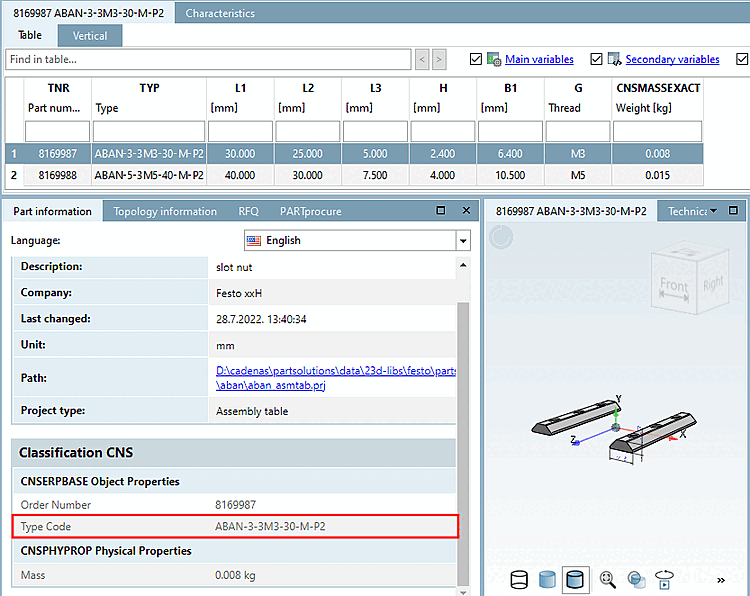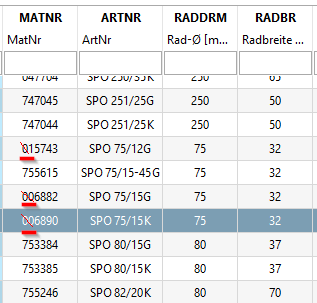Classification according to CNSORDERNO or CNSTYPECODE?
CNSORDERNO = Order number (article number)
Order number is sometimes used for products with value range fields (yellow fields).
Order number is also used for products without value range fields (yellow fields).
Common product groups are: Brackets, switches, bolts, nuts, but also more complex parts.
The characteristic feature in both cases is that there is no close relationship between table values and components of the order number. This is the decisive difference to CNSTYPECODE. There is a strict system here. Compare Fig. „Example: Clear relation between parts of type code and single variable values“.
CNSTYPECODE = type code (article code / order code)
Type codes are sometimes used for products with a particularly complex set of rules. In these cases, the project has value range fields (yellow fields), which usually results in a large number of possible combinations.
Common product groups are: Cylinders, motors, gears, linear modules, if configurable and customizable.
However,type codes can also be used for products without value range fields.
Characteristic feature in both cases is that there is a strict relation between table values and parts of the type code.
Enter article number correctly in eCATALOGsolutions
Hidden variables can also be used for a mapping. The variable is considered when indexing and can be searched.





![[Note]](https://webapi.partcommunity.com/service/help/latest/pages/jp/ecatalogsolutions/doc/images/note.png)



